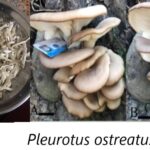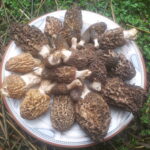Mushrooms are a well-known nutritious fungi found in the wild and cultivated for food and medicines worldwide. Morphologically, they are classified as puffballs, stinkhorns, brackets, and gilled fungi, either medicinal, inedible, or poisonous and threatened. Mushrooms are common during the wet season in most countries of the world and are abundantly found on different substrates.
The relationship between humans and mushrooms is old. Spanish were the earliest people who consumed mushrooms as food (18,700 years ago), Chinese (5,000 to 6,000 years ago), and Egyptians (4,600 years ago). The exact process by which early humans identified edible mushrooms those safe and suitable to eat is unclear, but there is little doubt it was by trial and error, a common approach used for wild plants and other living things that were hunted or gathered for food.
Mushrooms are traditionally used worldwide as nutritious food and medicinal sources due to their many health-promoting benefits and unique chemical composition. They contain micronutrients, selenium, vitamin D2, antioxidants, and many bioactive substances. Mushrooms have been valued as traditional sources of natural bioactive compounds for many centuries and have been targeted as promising therapeutic agents. Many novel biologically active compounds have been reported as a result of research on medicinal mushrooms.
Edible Mushrooms are rich in amino acids, protein, fiber elements, vitamins, and different minerals. They also contain substances that play a significant role as anticholesterol, antitumor, antimicrobial, antioxidant, antilipidemic, antidiabetic antihyperglycemic, antihypertensives, antiparasitic, anti-inflammatory hepatoprotective, hypocholesterolemic, immunomodulatory and anti-aging properties.
Wild mushrooms are an important source of income and nutrition for many poor communities and of value to recreational foragers. Almost 3000 species are regarded as prime edible mushrooms to date but only a few species are popular and used as food. Due to diverse ecological, medicinal, nutritional, and health-promoting properties mushrooms are gaining prime importance among scientific and research communities throughout the world.
Edible mushrooms are an ideal food and possess remarkable dietetic and medicinal values and are rich in carbohydrate, protein, and bioactive metabolites effective against immunomodulatory, cardiovascular, and hepatic problems, and anti-viral, antioxidant, and antimicrobial contents.
All the species of mushrooms are not edible. Many species of fungi are poisonous and need an accurate identification and authentic taxonomic description for the exploitation of the advantages and benefits of a mushroom. Poisonous mushrooms cause foodborne diseases or death. Recent molecular techniques reduce the challenges of inconspicuous nature, inconsistent morphology, and indiscrimination among fungal species which are linked with conventional methods of nomenclature.







